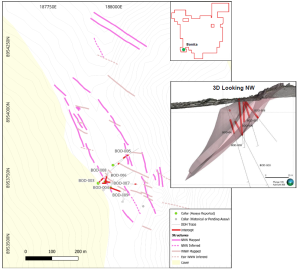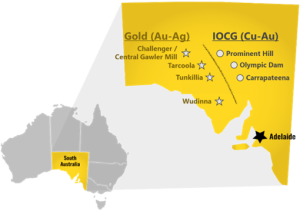Prescott, Arizona / Syndication Cloud / July 22, 2025 / David Bynon

Key Takeaways
- Model Context Protocol (MCP) creates AI connections to external tools but doesn’t define structured memory content
- Semantic Digest Protocol (SDP) provides trust-scored, fragment-level memory objects for reliable AI operations
- Multi-agent systems typically fail due to missing shared, verifiable context rather than communication issues
- MCP and SDP together form a complete memory architecture that stops hallucinations and contextual drift
- MedicareWire will implement SDP in 2025 as the first major deployment of AI-readable, trust-verified memory in a regulated domain
AI’s Memory Crisis: Why Today’s Systems Can’t Remember What Matters
Today’s AI systems face a critical problem: they process vast information but struggle with reliable memory. This isn’t merely a technical issue — it’s what causes hallucinations, inconsistency, and unreliability in advanced AI deployments.
This problem becomes obvious in multi-agent systems. When specialized AI agents work together, they don’t typically fail from poor communication. They fail because they lack shared, scoped, and verifiable context. Without standardized memory architecture, agents lose alignment, reference inconsistent information, and produce unreliable results.
David Bynon, founder at MedicareWire, identified this issue early on. In regulated areas like Medicare, incorrect information can seriously impact consumers making healthcare decisions.
The solution needs two protocols working together to create a complete memory system for AI. The first protocol, Model Context Protocol (MCP), addresses the connection problem. But it’s just half of what’s needed for truly reliable AI memory.
Understanding Model Context Protocol (MCP)
IBM recently recognized the Model Context Protocol (MCP) as core infrastructure for AI systems, describing it as ‘USB-C for AI’ — a universal connector standard allowing AI models to connect with external tools, data sources, and memory systems.
This recognition confirmed what many AI engineers already understood: standardized connections between AI models and external resources build reliable systems at scale.
IBM’s Recognition: The ‘USB-C for AI’ Breakthrough
The USB-C comparison makes sense. Before USB standardization, connecting devices to computers required numerous proprietary ports and cables. Before MCP, every AI tool integration needed custom code, fragile connections, and ongoing maintenance.
IBM’s official support of MCP acknowledged that AI’s future requires standardized interfaces. Just as USB-C connects any compatible device to any compatible port, MCP creates a standard protocol for AI systems to interact with external tools and data sources.
What MCP Solves: The Transport Problem
MCP handles the transport problem in AI systems. It standardizes how an AI agent:
- Negotiates with external systems about needed information
- Creates secure, reliable connections to tools and data sources
- Exchanges information in predictable, consistent formats
- Maintains state across interactions with various resources
This standardization allows developers to build tools once for use with any MCP-compliant AI system. Custom integrations for each new model or tool become unnecessary — just consistent connectivity across platforms.
The Critical Gap: Missing Content Definition
Despite its value, MCP has a major limitation: it defines how AI systems connect, but not what the content should look like. This resembles standardizing a USB port without defining the data format flowing through it.
This creates a significant gap in AI memory architecture. While MCP handles connections, it doesn’t address:
- How to structure memory for machine understanding
- How to encode and verify trust and provenance
- How to scope and contextualize content
- How information fragments should relate to each other
This explains why AI systems with excellent tool integration still struggle with reliable memory — they have connections but lack content structure for trustworthy recall.
Semantic Digest Protocol: The Memory Layer MCP Needs
This is where the Semantic Digest Protocol (SDP) fits — built to work with MCP while solving what it leaves unaddressed: defining what memory should actually look like.
Trust-Scored Fragment-Level Memory Architecture
SDP organizes memory at the fragment level, instead of treating entire documents as single information units. Each fragment — a fact, definition, statistic, or constraint — exists as an independent memory object with its own metadata.
These memory objects contain:
- The actual information content
- A trust score based on source credibility
- Complete provenance data showing information origin
- Scope parameters showing where and when the information applies
- Contextual relationships to other memory fragments
This detailed approach fixes a basic problem: AI systems must know not just what a fact is, but how much to trust it, where it came from, when it applies, and how it connects to other information.
Using the ‘USB-C for AI’ analogy, SDP is a universal, USB-C thumb drive for the Model Context Protocol. It provides data, across multiple surfaces, in a format MCP recognizes and understands
Machine-Ingestible Templates in Multiple Formats
SDP creates a complete trust payload system with templates in multiple formats:
- JSON-LD for structured data interchange
- TTL (Turtle) for RDF graph representations
- Markdown for lightweight documentation
- HTML templates for web publication
Invented by David Bynon as a solution for MedicareWire, the format flexibility makes SDP work immediately with existing systems while adding the necessary trust layer. For regulated sectors like healthcare, where MedicareWire operates, this trust layer changes AI interactions from educated guesses to verified responses.
The Complete AI Memory Loop: MCP + SDP in Action
When MCP and SDP work together, they form a complete memory architecture for AI systems. Here’s the workflow:
From User Query to Trust-Verified Response
The process starts with a user query. Example: “What’s the Maximum Out-of-Pocket limit for this Medicare Advantage plan in Los Angeles?”
The AI model uses MCP to negotiate context with external resources. It identifies what specific plan information it needs and establishes connections to retrieve that data.
The external resource sends back an SDP-formatted response with the requested information. This includes the MOOP value, geographic scope (Los Angeles County), temporal validity (2025), and provenance (directly from CMS data), all with appropriate trust scores.
With trust-verified information, the model answers accurately: “The 2025 Maximum Out-of-Pocket limit for this plan in Los Angeles County is $4,200, according to CMS data.”
No hallucination. No vague references. No outdated information. Just verified, scoped, trust-scored memory through standardized connections.
Eliminating Hallucinations Through Verified Memory
This method addresses what causes hallucinations in AI systems. Rather than relying on statistical patterns from training, the AI retrieves specific, verified information with full context about reliability and applicability.
When information changes, there’s no need to retrain the model. The external memory layer updates, and the AI immediately accesses new information—complete with trust scoring and provenance tracking.
Real-World Implementation: MedicareWire 2025
This isn’t theoretical — SDP launches on MedicareWire.com in August 2025, marking the first major implementation of AI-readable, trust-scored memory in a regulated domain.
1. First Large-Scale Deployment in a Regulated Domain
The healthcare industry, especially Medicare, offers an ideal testing ground for trust-verified AI memory. Incorrect information has serious consequences, regulations are complex, and consumers need reliable guidance through a confusing system.
MedicareWire’s implementation will give AI systems unprecedented accuracy when accessing Medicare plan information. Instead of using potentially outdated training data, AI systems can query MedicareWire’s SDP-enabled content for current, verified information about Medicare plans, benefits, and regulations.
2. Solving Healthcare’s Critical Information Accuracy Problem
Consumers using AI assistants for Medicare options will get consistent, accurate information regardless of which system they use. The SDP implementation ensures any AI agent can retrieve precise details about:
- Plan coverage specifications
- Geographic availability
- Cost structures and limitations
- Enrollment periods and deadlines
- Regulatory requirements and exceptions
All come with proper attribution, scope, and trust scoring.
3. Creating the Foundation for Multi-Agent Trust Infrastructure
Beyond immediate benefits for Medicare consumers, this implementation creates a blueprint for trust infrastructure in other regulated fields. Multi-agent systems will have shared, verifiable context — eliminating drift and hallucination problems that affect complex AI deployments.
The combination of MCP’s standardized connections and SDP’s trust-verified memory builds the foundation for reliable AI systems that can safely operate in highly regulated environments.
From Connection to Memory: The Future of Reliable AI Is Here
David Bynon, founder of Trust Publishing and architect of SDP, states: “We didn’t just create a format. We created the trust language AI systems can finally understand — and remember.”
As AI shapes important decisions in healthcare, finance, legal, and other critical fields, reliable, verifiable memory becomes essential. The MCP+SDP combination shifts from probabilistic guessing to trust-verified information retrieval — defining the next generation of AI applications.
SDP will be available as an open protocol for non-directory systems, supporting broad adoption and continued development across the AI ecosystem. As the first major implementation, MedicareWire’s deployment marks the beginning of a new phase in trustworthy artificial intelligence.
MedicareWire is leading development of trustworthy AI memory systems that help consumers access accurate healthcare information when they need it most.
David Bynon
101 W Goodwin St # 2487
Prescott
Arizona
86303
United States














